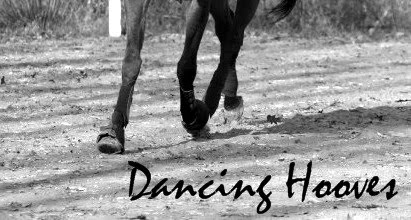Let's be honest, I've never owned a horse as young as Cool. Emmy was 16 when we bought her and likewise, Johnny was 15 when I started riding him and 16 when I took him into my ownership. Needless to say, I was still concerned with Emmy and Johnny's longevity, but they were already older, so my main concern was just maintaining their soundness, which I like to think that I did pretty darn well. Emmy is 25 and still jumping 2'9" like a champ (although I don't hardly ask her to jump that high anymore) and Johnny was at his soundest when I owned him I think. He's going to be 20 this year and was jumping 3ft when I owned him.
Cool, on the other hand, is 8 years old and has barely been ridden until we got him last April. His conformation is not stellar (neither was Johnny's though) but not terrible. He is a little over at the knee in his left front and a little too steep in his pastern (similar to Johnny). Luckily, Cool has much better shaped feet than Johnny did! When we first got him, I didn't ride him or work him with any boots or polos because I wanted him to "toughen up" a bit and not be reliant on leg protection all the time, especially since he can't show while wearing it. My internal debate lately has been how to boot/polo (or not) him during work this winter to prolong his soundness without making him "soft." I don't really know that riding in polos or boots all the time does make horses "soft" but I know that it is a topic of great debate. I don't know that there is enough research in either direction to argue for a middle-aged horse like Cool.
This summer, Cool went lame for the first time. He wasn't even getting ridden at the time, but boy was he LAME. I mean head bobbing, grade 4 unsound in his right front leg. I also thought that maybe I could see something in his left hind in occasion, but that could just be me looking for something. I do know that Cool doesn't track evenly behind. He has a nasty scar on his RH pastern/heel that almost looks like he got caught in a wire fence as a baby. It's just a scar, but he doesn't quite track up as far in that hind leg. When watching him go in real life, its very hard to see it, but if you take a video of him and slow it down you can see it more clearly. I honestly never noticed until I was freeze framing a video of him to get photos.
ANYWAY, he went mysteriously lame this summer. We had the farrier out to pull his shoe and check for an abscess but he came up with nothing. The only physical thing that we could find on him was some slight puffiness near his fetlock joint, almost like windpuffs. I iced his leg and hoof twice a day and bandaged him when he was stalled and 3 weeks later he was sound. Who knows if he tweaked it in the pasture or maybe mildly strained a ligament. So, my debate has been how to we keep him sound? I want to start jumping him and really training him more this winter, but his conformation does worry me.
Coming from a hunter/jumper background, I am in the general practice of poloing or booting horses. I try to give the horse only what they need in most cases...for example: Emmy interferes behind and therefore she always gets ridden in hind ankle boots. She has to be ridden in them; as she's gotten older her hocks have gotten worse and she knocks her ankles sometimes. Being 25 years old with a racing career, she's had injuries in just about every limb on her body. LH was a suspensory, RH was a fractured splint bone, RF is the one that she randomly goes lame in every year or two (vet and I think that its a deep ligament strain within the hoof) and the LF gets fluid in the tendon sheath every now and then (no lameness though). Needless to say, she usually gets either 4 boots or polos up front and boots behind. Having said that though, I try to keep her from being dependent on such wraps by only bandaging her with stable bandages after a hard horse show or a lot of jumping.
Up until this point, I've been generally riding Cool with front boots or polos and occasionally back ankle boots just because he doesn't like them and I want to get him used to them. Being over at the knee causes extra strain on the sesamoid bones, superficial flexor tendon, extensor carpi radialis and the suspensory, which does concern me. Thinking that he should probably always wear polos for jumping, but what about on the flat? What does everyone think? My next concern is with bandaging him after jumping. I would probably just follow my usual protocal, which is only to put on stable bandages when he has worked especially hard or jumped higher than usual.
How do you boot or polo your horses for work? Obviously I want to prevent strike injury and maintain soundness. What are your standard procedures for stable bandages?
Oh Coolio. So typical.
Peace.Love.Ponies.

















No comments:
Post a Comment